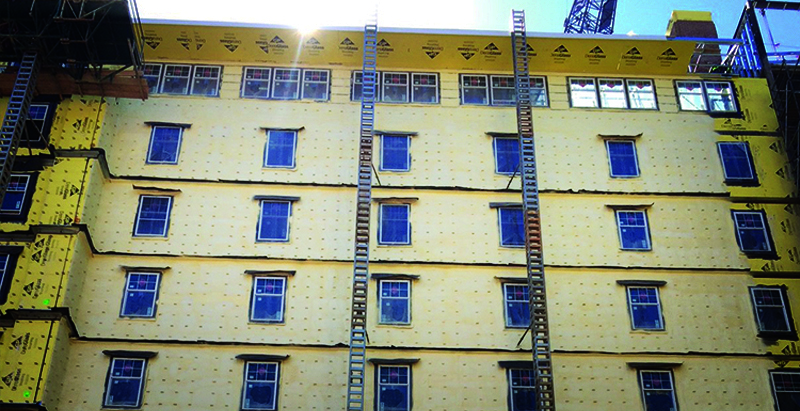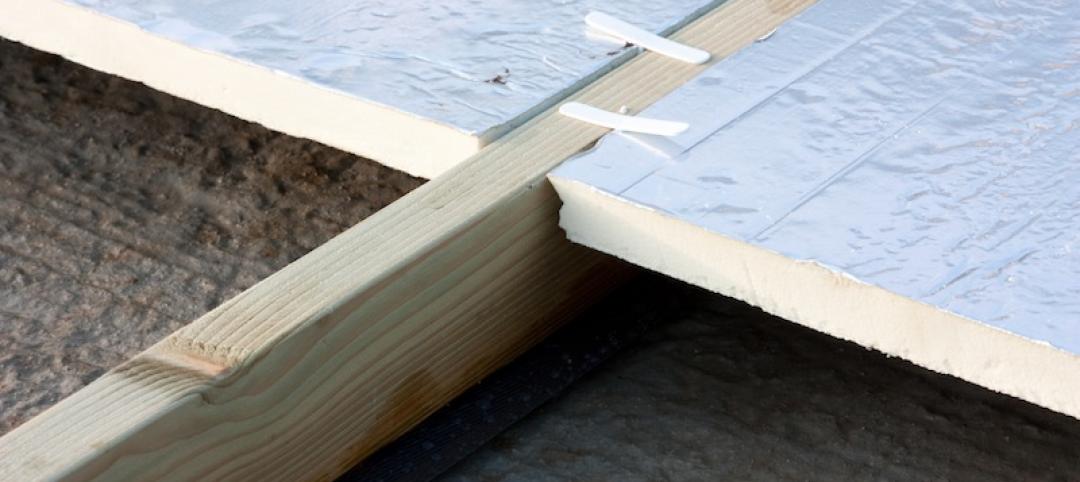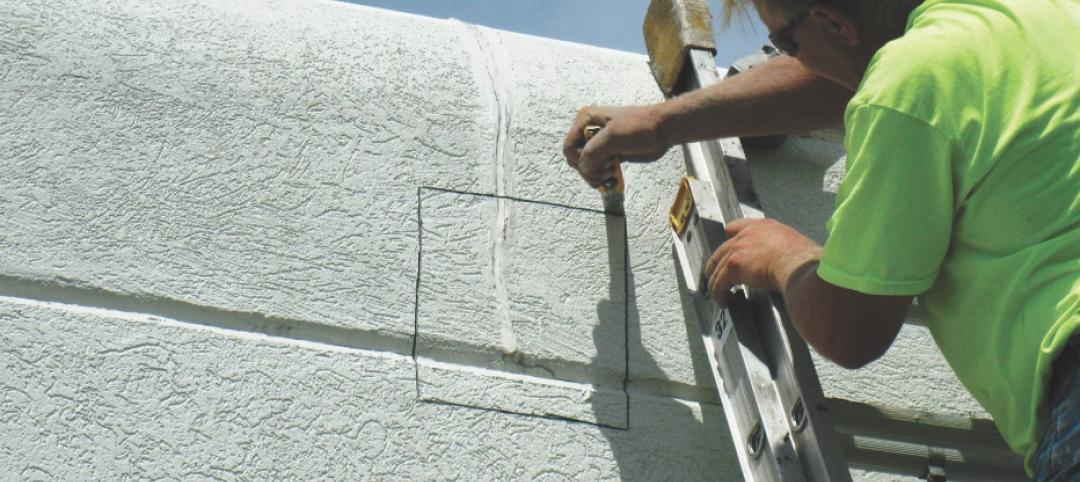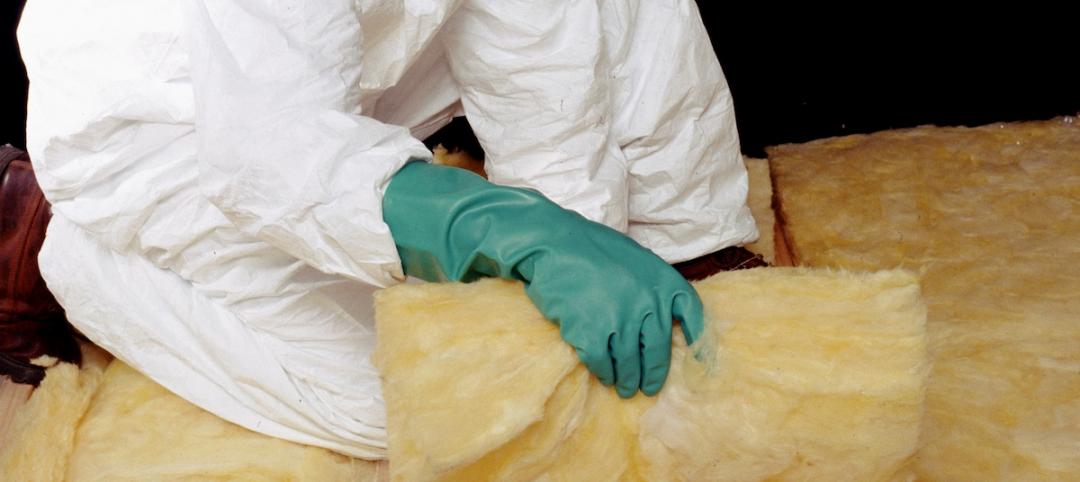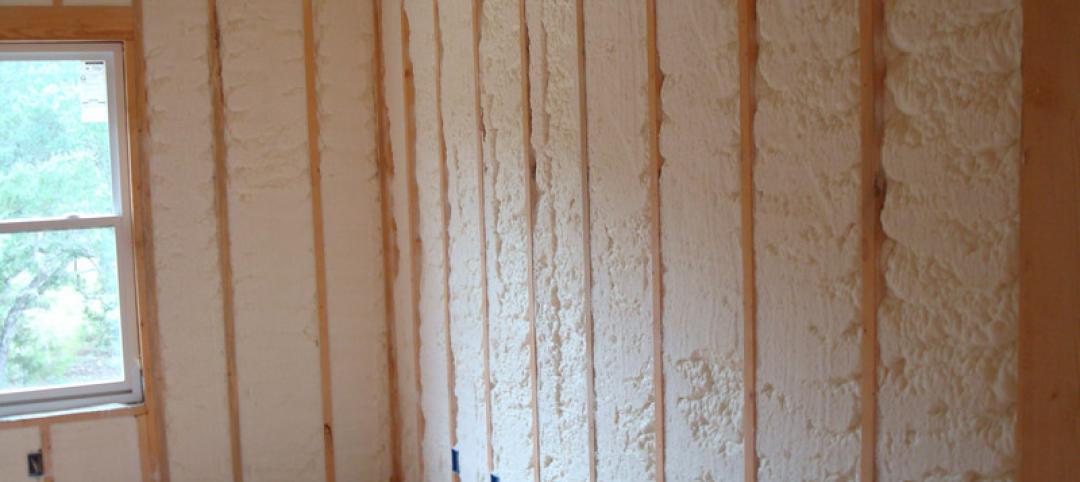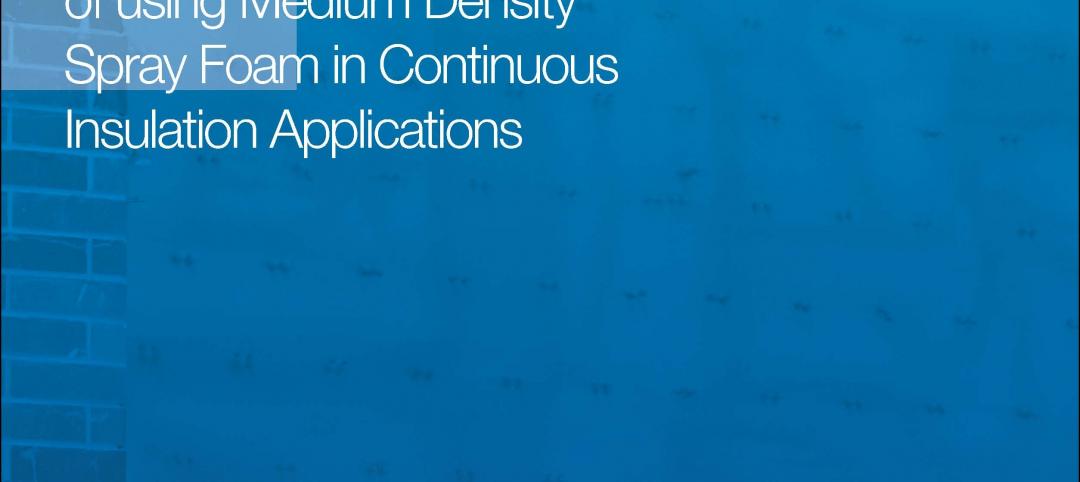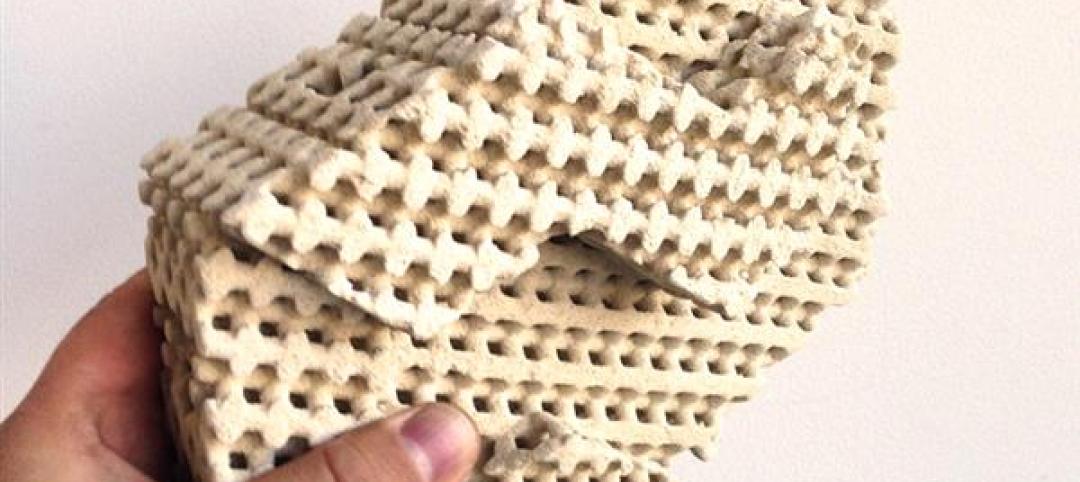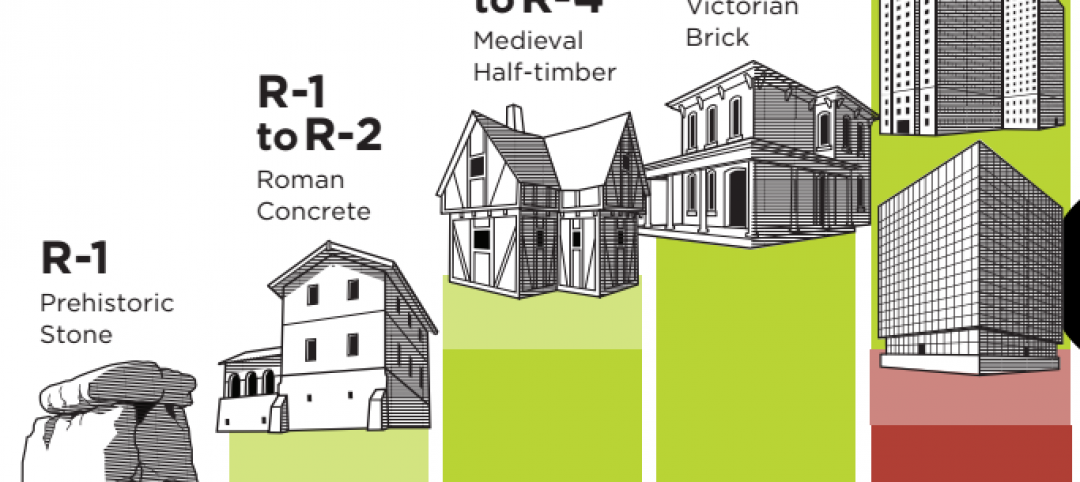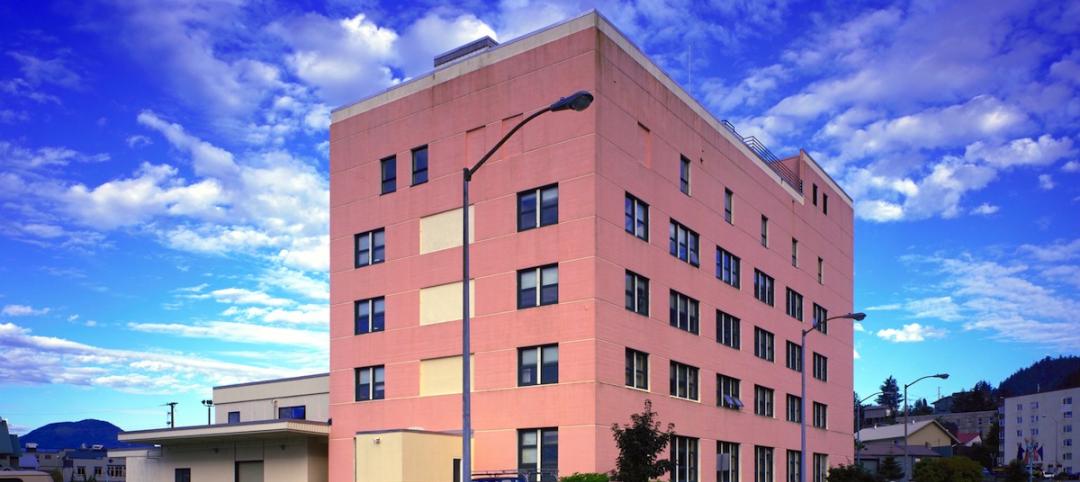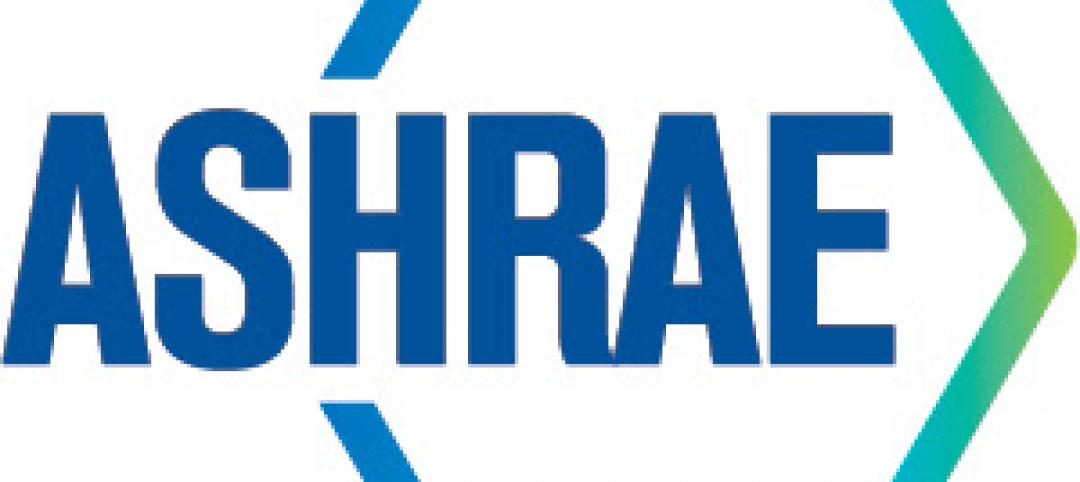Liberty University’s $500 million campus rebuilding project is designed to provide current and prospective students with an array of living, learning and experiential opportunities and facilities that enhance the overall student experience. Ensuring that student residences were maximizing energy efficiency with comfortable living spaces and contributing to how the university manages energy consumption, the recent completion of a nine story student residence hall, the first of six, was wrapped in a high-performance medium-density spray foam insulation product from Icynene. The decision to wrap the new residence halls in high performance spray foam insulation follows the university’s energy conscious approach where energy efficiency planning begins from the design and development phase.
In the lead up to developing the new residence halls, the university took the opportunity to listen and respond to students. With more than 13,200 resident students expected in the 2014-2015 academic year, the sense of community was equally as important as the individual. The university sought to establish community spaces where students could interact, engage and study with their friends and peers. Furthermore, the university’s stance toward responsible stewardship also meant a proactive approach to energy efficiency and sustainable materials was important.
The project included replacing the original 16 Champion Circle residence halls built on the same site in the 1970s; the first of the new student residences – Residential Commons I – was on schedule to be operational in time for the start of the 2014-2015 academic year. Residential Commons I was designed to house 1200 students in a two bed-one bathroom per room configuration, enough to replace all of the original residence halls. 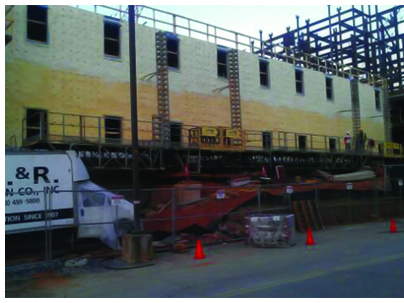
With the tight construction schedule, a daily crew of 60 to 100 contractors worked to erect the steel framing, wall panels, floor slab and insulate the building to complete the project on time. High-performance spray foam insulation was specified to achieve optimal thermal comfort while help better manage energy use. Licensed Icynene contractor, AC&R Insulation of Elkridge Maryland, was recruited to insulate and air seal the residence hall in a continuous insulation application whereby Icynene MD-C-200 closed cell spray foam was applied to the exterior walls.
Closed cell spray foam insulation, like that from Icynene, provides a high-performance all-in-one continuous insulation and air barrier solution for the outer surface of sheathing on a framed wall. Furthermore, the material smoothly and completely covers all areas that could otherwise provide energy draining thermal bridges. The end result is a total high-performance wall assembly solution that can enhance and work with virtually any architectural design approach. Icynene MD-C-200, along with Icynene ProSeal, has been evaluated by the Air Barrier Association of America (ABAA) to contribute to reducing building enclosure moisture problems, improving indoor air quality and reducing building heating and cooling costs, ideal in high occupancy buildings such as the new residence halls at Liberty University.
Spray foam contractor, AC&R Insulation wrapped the entire building with Icynene MD-C-200 in under two months to keep to the university’s tight construction schedule.
The nine-story tower was completed in time for the new academic year and features a community space on every floor of the building allows students to congregate and interact with their peers and friends. Construction of the additional residence halls continues with the university expecting to see a 2016 completion date.
Sources:
- http://www.liberty.edu/libertyjournal/index.cfm?PID=24995&MID=160324
- http://www.prweb.com/releases/2014/07/prweb12039512.htm
- http://www.liberty.edu/news/index.cfm?PID=18495&MID=122778
Contact Information:
Icynene
Ph: 1-800-758-7325
Fax: 905-363-0102
Email: architect@icynene.com
www.icynene.com
Related Stories
Insulation | Feb 24, 2016
Green Seal seeks stakeholders for new insulation standard
Green Seal seeks stakeholders for new insulation standard.
| Jan 14, 2016
How to succeed with EIFS: exterior insulation and finish systems
This AIA CES Discovery course discusses the six elements of an EIFS wall assembly; common EIFS failures and how to prevent them; and EIFS and sustainability.
Insulation | Oct 19, 2015
The expert’s guide to insulation materials
Even the best-designed envelopes can be undermined by thermal bridging in areas where insulation is deficient. Building envelope experts offers advice.
Insulation | Jul 31, 2015
Report: With proper installation, all insulation materials perform equally well
The finding is contrary to popular belief among builders and installers that insulation quality varies depending on the material.
Brick and Masonry | Feb 5, 2015
3D-printed 'cool brick' may provide cooling solution for arid locations
Cool Brick is made of porous ceramic bricks set in mortar. The bricks absorb water, which cools the air as it passes through the unit.
| Oct 16, 2014
Perkins+Will white paper examines alternatives to flame retardant building materials
The white paper includes a list of 193 flame retardants, including 29 discovered in building and household products, 50 found in the indoor environment, and 33 in human blood, milk, and tissues.
| Jul 17, 2014
A harmful trade-off many U.S. green buildings make
The Urban Green Council addresses a concern that many "green" buildings in the U.S. have: poor insulation.
| Jul 17, 2014
GSA study finds biomass boilers are viable option for heating federal buildings
After operating the first biomass boiler in the Ketchikan, Alaska, Federal Building, the U.S. General Services Administration (GSA) has concluded that biomass boilers are a viable alternative for hot-water-heated buildings where natural gas is unavailable.
| Jul 17, 2014
Alliance formed to promote research on indoor air quality
A memorandum of understanding creating the Indoor Environment Quality Global Alliance was signed on June 29; the Alliance was formed to explore ways in which industry groups could work together to address all aspects of indoor environmental quality and health.


